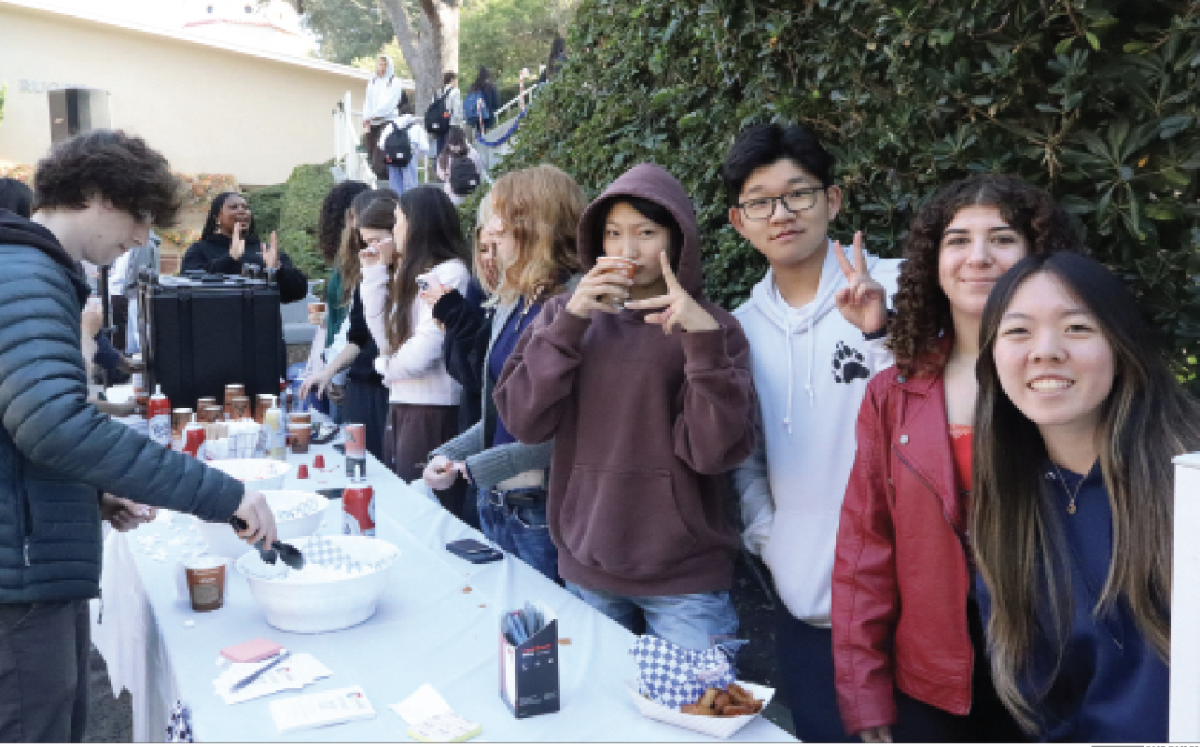Bee-keeping, teaching at-risk youth and building projects for public parks and churches helped seven students earn the highest honors offered by the Boy Scouts of America and the Girl Scouts of the USA organizations.
Patrick Albarino ’16, Amiya Brown ’14, Eric Knighton ’16, Scott Nussbaum ’15, William Ruppenthal ’16 and Nick Steele ’16 all achieved Eagle Scout status in the past two months.
Lauren Sonnenberg ’14 received the Girl Scout Gold Award the last week of September. Eagle is the highest rank in Boy Scouts, and in a system where scouts advance one rank each year, is typically reached during a scout’s sophomore year.
Scouts are required to plan and execute an Eagle Project, a service work that must benefit the community, involve other boy scouts and take at least 100 combined hours of service between all involved.
The Gold Award is the culminating distinction in the series of Bronze, Silver and Gold Awards. It involves an 80-hour service project, for which a proposal must be submitted to and approved by the Girl Scout Council of America.
Albarino, Knighton, Ruppenthal and Steele were all part of Troop 223, located in the Pacific Palisades, and were ranked up together in a ceremony Nov. 26.
Albarino, Knighton and Ruppenthal did their Eagle Projects at St. Matthew’s Parish Church, though at different times in the past year. Albarino built picnic tables and refurbished the Parish’s existing ones, Knighton constructed a seating area for the Parish and Ruppenthal built compost bins.
Steele did his project separately, at the California Wildlife Center, where he built an enclosure to house rescued birds of prey. Albarino, who joined the troop in fifth grade, found the actual ceremony almost bittersweet.
“I felt really nostalgic when I was being presented as an Eagle Scout about all the time I spent and all the fun I had, and it was a really great feeling,” Albarino said.
Brown, out of Troop 10 in Reseda, made a film about urban beekeeping and how viewers could implement it in their own communities, as well as the crisis currently facing the species as a whole, as Colony Collapse Disorder has killed approximately one-third of all honeybees in the past few years.
Brown, who keeps a few hives at a friend’s house, had arranged to give the film to Honey Love, a non-profit that works to protect honeybees by spreading urban beekeeping. With the film completed, he became an Eagle Scout last month, an achievement that afforded Brown, who’d been a scout for seven years, a lot of relief.
“It was a big weight off my shoulders,” Brown said.
Nussbaum fulfilled his Eagle Project by building a bulletin board structure in William S. Hart Park in Valencia. The structure, the bulk of which Nussbaum built over a weekend in October, will be used by the park to display information about camping.
Nussbaum officially became an Eagle Scout last Tuesday, when he went to the required meeting with the Board of Review, which interviewed him about his time as a boy scout and how he planned to use all he’d learned from his five years of scouting. His answers satisfactory, Nussbaum received the Eagle rank right then and there.
“I felt really accomplished that all my hard work had paid off, but it was actually a little anti-climactic – they just shook my hand and said ‘Congratulations, you’re an Eagle Scout,’ but it was still really good,” Nussbaum said.
Sonnenberg taught the past two summers at the Stephen S. Wise chapter of the Children’s Defense Fund Freedom School, a nationwide initiative that provides summer and afterschool enrichment to at-risk youth. Sonnenberg, a longtime dancer, taught dance in the afternoon in addition to the more school-oriented teaching in the morning.
The Gold Award Sonnenberg received in September was a long time in the making.
The last stage of Sonnenberg’s 11 year Girl Scout career began when she submitted her proposal to the Girl Scout Council of America in June, 2012, and wrote a draft of her curriculum and taught it two times at the Freedom School that summer. The background of her students required additional research before she would be ready to teach one day a week this past summer.
“I was trying to find a teaching style most effective for kids from troubled homes, so I did a lot of research prior to submitting my curriculum,” Sonnenberg said.
In returning this summer to teach dance to the same group of students, Sonnenberg found that the extensive research and organization paid off in an unexpected way.
“Because I’d spent so much time organizing it, researching it and planning out a curriculum, I was able to develop a different kind of relationship with them – student-teacher as well as just friend-to-friend.”




























